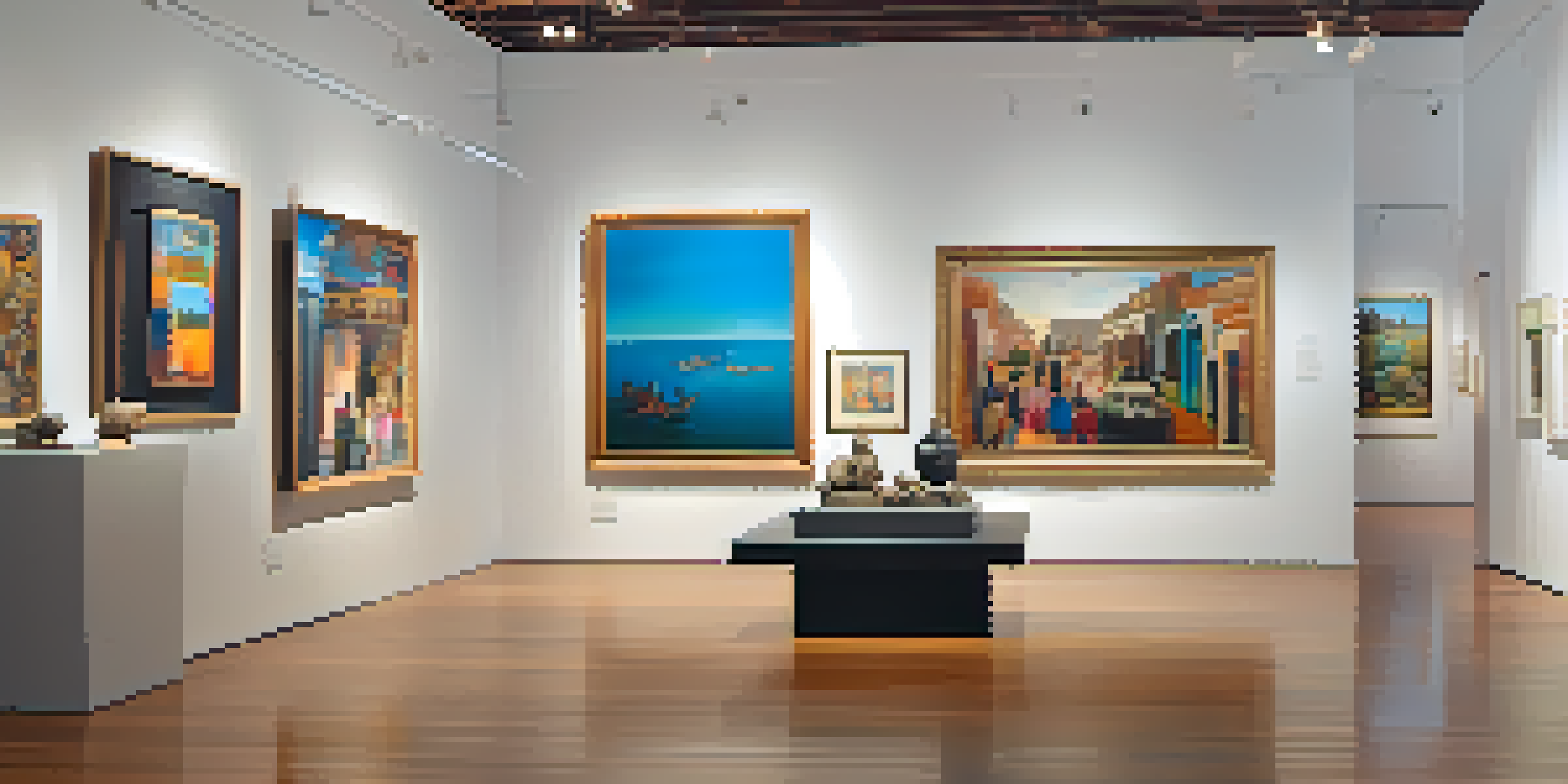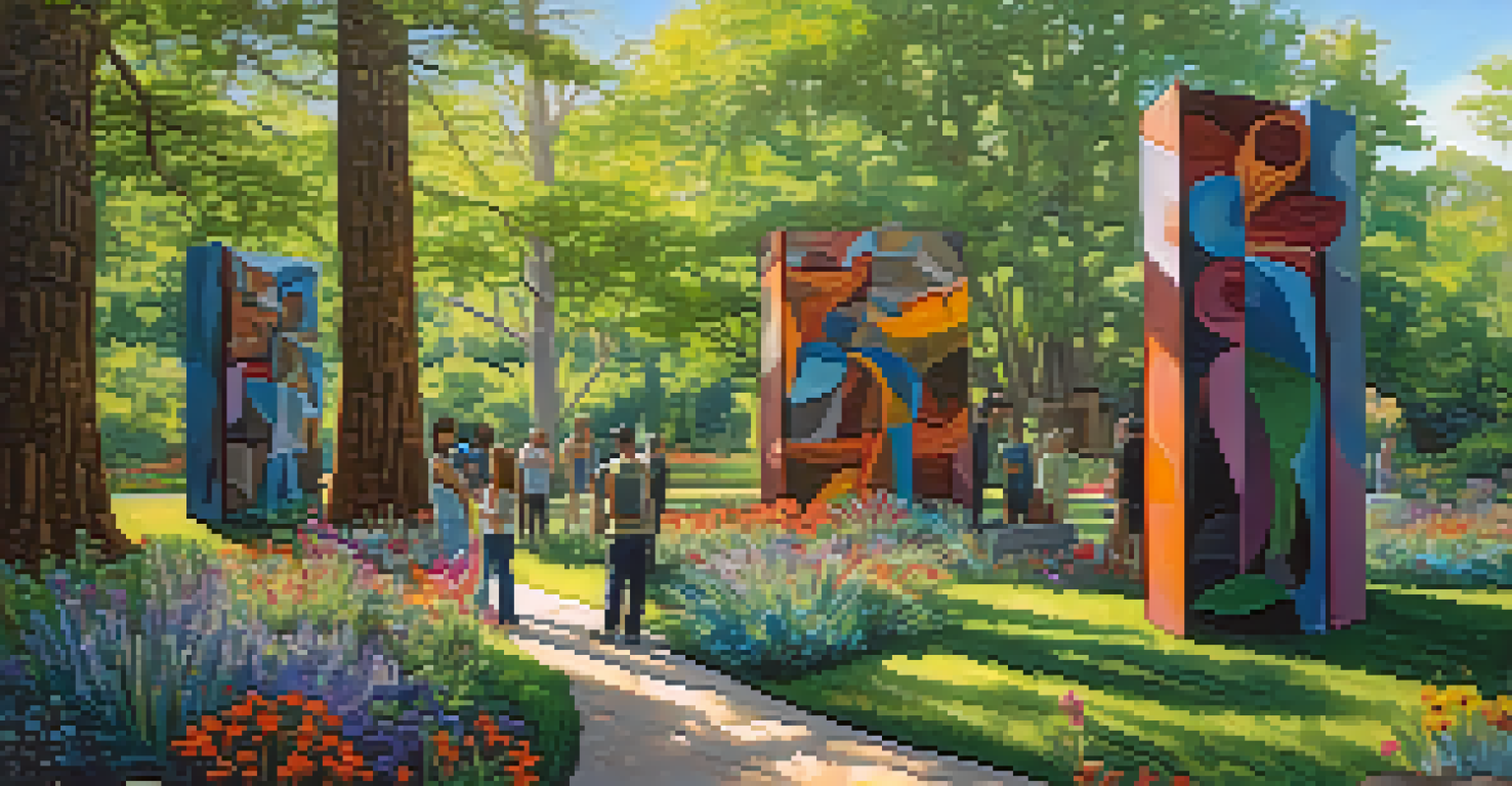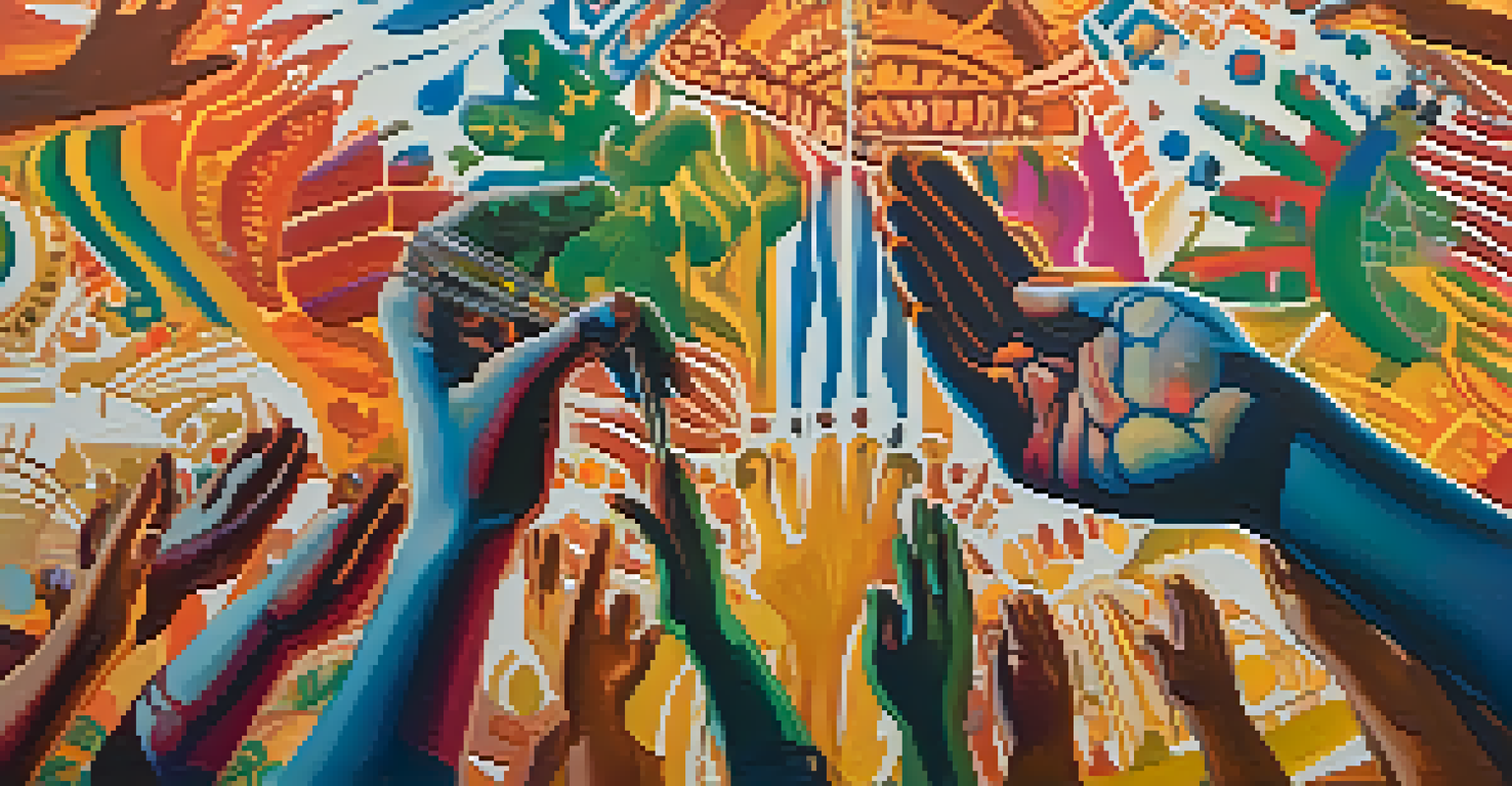The Effects of Colonialism on Art and Representation Today

Understanding Colonialism and Its Historical Context
Colonialism refers to the practice of acquiring partial or total control over another country, often through force. This historical phenomenon has left deep scars and has shaped the cultural landscapes of colonized nations. While many may think of colonialism as a relic of the past, its effects can still be felt in various aspects of life today, including art and representation.
The past is never dead. It's not even past.
To truly grasp the influence of colonialism on art, we must look at the context in which it thrived. Colonizers often imposed their artistic values and aesthetics on the colonized, effectively silencing indigenous voices and erasing cultural identities. This imposition created a cultural hierarchy where Western art was deemed superior, overshadowing the rich traditions and narratives of local art forms.
This historical context is crucial for understanding the ongoing dialogues in contemporary art. Many artists today use their work to challenge colonial narratives and reclaim their cultural heritage, making it essential to recognize the past as we navigate the present.
The Legacy of Colonial Imagery in Art
Colonialism has left a lasting imprint on how cultures are depicted in art. Often, colonial art perpetuated stereotypes and exoticized the colonized, reducing rich cultures to mere caricatures. These representations not only misrepresented the people but also served to justify oppressive colonial practices.

Today, these colonial images can still be found in museums, galleries, and public spaces, creating a sense of unease for many. Art that was once celebrated for its 'beauty' is now scrutinized for its role in perpetuating harmful stereotypes. This prompts a reevaluation of how art is curated and displayed, pushing institutions to address their colonial past.
Colonialism's Lasting Impact on Art
Colonialism has deeply influenced artistic representation, perpetuating stereotypes and erasing indigenous identities.
As artists and curators confront this legacy, they seek to decolonize art spaces by amplifying underrepresented voices. This movement encourages a more nuanced understanding of art that honors diverse cultural expressions rather than merely fitting them into a colonial framework.
Contemporary Artists Challenging Colonial Narratives
Many contemporary artists are actively challenging colonial narratives through their work. By addressing themes of identity, race, and cultural heritage, these artists shed light on the complexities of post-colonial existence. Their art often serves as a form of resistance, reclaiming space and representation for marginalized communities.
Art is a way of recognizing ourselves.
For instance, artists like Yinka Shonibare and Kehinde Wiley create pieces that provoke thought about the intersection of colonial history and modern identity. They invite viewers to question the status quo and consider how history shapes contemporary experiences. Through their innovative approaches, they disrupt traditional art forms and introduce new narratives.
This push against colonial narratives is not just limited to visual art. Literature, performance, and digital media are also being harnessed to tell stories that challenge the dominant historical discourse. As these artists gain recognition, they inspire future generations to explore their own identities and histories.
The Role of Museums in Post-Colonial Representation
Museums have long been custodians of art and culture, but their roles are evolving in the face of post-colonial scrutiny. Many institutions are beginning to acknowledge their complicity in colonial narratives and are actively seeking to change how they represent art from colonized cultures. This shift is essential for fostering a more inclusive and accurate portrayal of global art history.
One key aspect of this transformation is the repatriation of artifacts that were taken during colonial periods. Museums are increasingly facing pressure to return cultural treasures to their rightful owners, a gesture that acknowledges past injustices. This act of returning is not just about physical artifacts, but also about restoring dignity and agency to colonized cultures.
Contemporary Artists Reclaim Narratives
Modern artists challenge colonial legacies by exploring themes of identity and cultural heritage in their work.
Additionally, museums are increasingly collaborating with indigenous artists and communities to create exhibitions that reflect authentic narratives. This partnership helps to dismantle the traditional power dynamics in the art world, ensuring that the voices of those most affected by colonialism are heard and represented.
Cultural Appropriation vs. Appreciation in Art
The fine line between cultural appropriation and appreciation has become a hot topic in the art world. While cultural exchange can lead to beautiful collaborations, it can also result in the exploitation of marginalized cultures. Understanding this distinction is vital for artists and audiences alike, as it shapes how we engage with art from different backgrounds.
Cultural appropriation occurs when elements of a culture, often belonging to a marginalized group, are used without permission or understanding. This practice can strip away the significance of those cultural elements, reducing them to mere trends. On the other hand, cultural appreciation involves a respectful engagement with another culture, promoting understanding and dialogue.
Artists must navigate these complex waters thoughtfully. Many contemporary creators strive to honor the cultures they draw inspiration from, ensuring they give credit and context. By doing so, they contribute to a richer, more nuanced artistic landscape that celebrates diversity rather than capitalizes on it.
The Impact of Globalization on Art and Representation
Globalization has transformed the art world, enabling greater access to diverse influences and artistic practices. While this interconnectedness can foster collaboration and innovation, it also poses challenges in terms of representation and authenticity. As artists draw from a global palette, the risk of homogenization looms large, potentially overshadowing local traditions.
In this global landscape, artists are faced with the question of how to remain true to their cultural roots while engaging with a broader audience. Some choose to blend traditional and contemporary elements, creating hybrid forms that speak to both their heritage and modern experiences. This dialogue can lead to fresh perspectives but must be handled with care to avoid diluting cultural significance.
Museums' Evolving Role in Representation
Museums are increasingly recognizing their colonial past and are striving to represent art from colonized cultures authentically.
Moreover, the internet has become a powerful tool for artists to share their stories and connect with audiences worldwide. Social media platforms allow marginalized voices to be heard, challenging dominant narratives and fostering a sense of community. As globalization continues to shape the art world, artists must balance their unique identities with the diverse influences that surround them.
Future Directions in Art and Representation
As we reflect on the effects of colonialism on art and representation, it's clear that ongoing dialogue and action are essential. The future of art lies in embracing diverse voices and creating spaces where all cultures are celebrated. This requires not only artists but also institutions, curators, and audiences to engage in critical conversations about representation and inclusion.
Emerging trends indicate a growing focus on intersectionality, where artists explore the overlapping aspects of identity, including race, gender, and class. This approach enriches the narrative landscape, offering a more comprehensive understanding of the human experience. By prioritizing these intersections, art can become a powerful tool for social change.

Ultimately, the journey toward equitable representation in art is a collective effort. As we move forward, it is crucial to support artists who challenge the status quo and advocate for their communities. Through this commitment, we can foster a more inclusive art world that reflects the richness of our shared humanity.